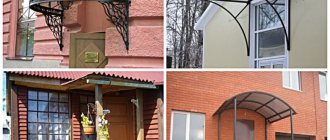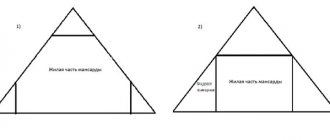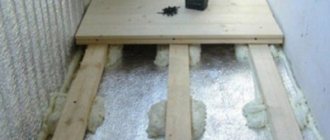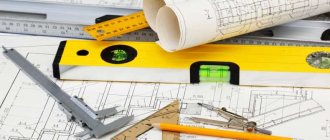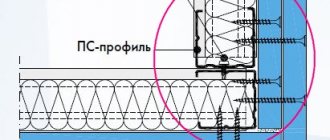An air compressor is necessary for every car owner, since using the services of car services for any problem is very expensive. For a city car enthusiast living in a multi-story building, a compact, portable electric tire pump is sufficient. If you have your own garage, a compressor device is already a mandatory measure. The device is useful for connecting pneumatic tools, for repairing and painting cars. It is quite possible to make a compressor yourself, which will help save up to 50% of the cost of a production installation.
Operating principle and design of the compressor
The main working unit of the device is the air blower. When planning to make a compressor, it is necessary to take into account differences in operation depending on the purpose of the device.
If when inflating car tires the uniformity of air supply does not play a special role, then for the effective operation of the spray gun this is a prerequisite.
A storage tank called a receiver will help ensure uniform air injection.
Peculiarities
A fairly common question is which device is most suitable for painting work. This is due to the fact that a homemade compressor for painting must ensure a uniform supply of air without various impurities. If the air supply is uneven, there is a possibility of leaks and other defects.
Branded equipment is characterized by the presence of a fairly large number of different functions that significantly expand the scope of the device. An example is the use of a compressor for high-quality operation of an airbrush. However, purchased versions are much more expensive, which can be called their significant drawback.
The operating principle of any such device, regardless of whether it is purchased or homemade, is as follows:
- Excessive pressure is created in the installed storage tank.
- Air can be pumped in a variety of ways, most often manually.
- The mechanical device is designed to ensure uniform air supply.
Some errors may result in the product being dispensed unevenly.
That is why attention is paid to recommendations for assembling a homemade structure.
Preparatory stage in the manufacture of a compressor
At the planning stage of assembling a homemade compressor, it is necessary to decide what will act as an air blower. It is reasonable to use components from old household appliances or internal combustion engines for this purpose.
For various works in rooms of limited area, the most acceptable option is a 220 V device, assembled independently. The advantage of such electric compressors is their low noise level.
A similar do-it-yourself compressor for painting or applying airbrushing is preferred by workers in private automobile workshops that perform body work.
Operating pressure in a refrigerator compressor
The operating pressure produced by a standard compressor connected to the refrigerator ranges from 2 to 4 atmospheres.
This may seem like a small indicator to some, but no more is needed to circulate freon through a closed system; at this pressure it copes with its function perfectly. You also need to understand that when connected to refrigeration chambers, it is specially configured for exactly this power. The regulators keep the work at a certain level so that the refrigerant pipes do not rupture.
What to make a receiver from
The simplest receiver for a compressor intended for small volumes of work can be easily made from a tubeless car wheel. It should be taken into account that after modernization the wheel cannot be used for its original purpose.
If you need to make a compressor for large volumes of work, then it is recommended to use a gas cylinder or any type of fire extinguisher as a container.
Note!
- DIY induction heater ♨️ - reviews of the best manufacturing options. Varieties of homemade device designs + step-by-step master class (160 photos)
- Do-it-yourself Gauss cannon: TOP-130 photos of the best ways to create it yourself. Design features + master class for beginners
- DIY clamps - a step-by-step master class for beginners. Schemes for manufacturing different designs + 170 photos
Working mechanism
To simplify the procedure, the engine can be a compressor from an old Soviet-style refrigeration unit. There is one positive point here, namely the presence of a compressor start relay.
disassembled compressor
Soviet models are superior to their foreign competitors by producing higher pressure. After removing the executive unit, it is necessary to put it in order, freeing it from accumulated rust.
A rust converter will help treat the compressor to prevent further oxidation. In this way, the working motor housing will be prepared for subsequent painting.
Installation diagram
After completing the introductory part, you can start changing the oil. After all, if you don’t cheat, there are very few refrigerators that have managed to undergo regular maintenance or oil changes. However, this course of events is also completely justified, because in this case the system is completely isolated from atmospheric influences.
So, semi-synthetic oil is quite suitable for this procedure. Moreover, it is no worse than compressor oil and has a sufficient number of useful additives.
We go further and find 3 tubes on the compressor, 2 of which are open, one is sealed. In our case, open tubes will be used for air circulation (inlet and outlet). To understand how air moves, you need to apply power to the compressor for a short time. Then remember or write down which air duct draws in air and which, on the contrary, releases.
The purpose of the sealed tube is for routine oil changes. Therefore the closed end should be removed. A needle file will help us with this; we need to make a notch around the circle of the tube. In this case, you should make sure that chips do not get inside the compressor.
After that, it is necessary to break off the end of the tube and drain the oil into any container in order to determine its volume for subsequent replacement. Then we take a syringe and fill in the semi-synthetic, but in a larger volume than was drained.
When the oil is filled, you need to turn off the engine lubrication system. This can be done by selecting the required screw, after which this screw is wrapped with fum tape and screwed into a tube. This is a good time to remind you that oil droplets will sometimes leak out of the supercharger air outlet tube.
Therefore, an oil and water separator for a compressor will come to the rescue.
When the indicated work is completed, it is time to begin assembling the installation. You need to start by strengthening the engine with the starting relay on a wooden base, so that it is in the same position as it was on the frame.
This is necessary due to the sensitivity of the compressor relay to spatial position. To determine more precisely, an arrow should be drawn on the top cover. It is important to maintain accuracy here, because the correct switching of modes will depend on the installation of the compressor.
Air container
An excellent solution to the problem would be fire extinguisher cylinders. This depends on their ability to withstand high pressure; in addition, the cylinders have a significant margin of safety and are excellent as attachments.
So, let's take the OU-10 fire extinguisher as a basis. Its working volume is 10 liters. According to the technical characteristics, the cylinder can withstand pressure of 15 MPa. Now we need to unscrew the locking and starting device from our workpiece, and then screw in the adapter.
In this case, if traces of corrosion are detected, they must be removed with a rust converter. Of course, external removal is not difficult, but internal removal will require patience. Therefore, we pour the converter inside the cylinder and shake the contents.
After cleaning, you can screw in the plumbing cross. Thus, two working parts of our compressor installation were prepared.
Installation of parts
To make it easier to store and move working parts, it is best to place them on one base. As mentioned earlier, you need a wooden board, which will serve as the basis for securely fastening the engine, as well as the fire extinguisher body.
simple compressor
Therefore, we will use threaded rods to mount the engine, which must be threaded into pre-drilled holes. Of course, in addition to everything you will need nuts (washers).
Then you need to position the receiver in a vertical position; 3 sheets of plywood will come in handy here. In this case, you need to make a hole in one sheet for the cylinder. The remaining sheets are attached with self-tapping screws to the main board and glued to the sheet that holds the receiver.
But, the day before, you still need to hollow out a recess in the wooden base for the bottom of the receiver. And finally, to make the structure maneuverable, you need to screw furniture wheels to its base.
After everything has been done, you need to protect the system from possible dust. A gasoline coarse fuel filter will come to the rescue. It will serve as an air intake.
This will involve the rubber hose and the supercharger inlet tube. It should be noted that there is low pressure at the inlet of the compressor station, and, therefore, strengthening the contact using automobile clamps is not necessary.
Thus, we have created an input filter for the compressor unit. At the outlet of the station, you need to install an oil and water separator that will block the entry of water particles. The power system filter will be used here. Due to the fact that the pressure at the outlet of the compressor station is increased, automobile clamps will be used from this point.
So, the turn came to the oil-water separating filter. In this case, it must be connected to the input of the gearbox, which is needed to decouple the reservoir and the pressure output of the supercharger. This means that we screw the outlet into the previously prepared cross on the left side, and screw in a pressure gauge on the right, thanks to which we can control the balloon pressure. You need to screw in the adjusting relay on top of the cross.
The presence of an adjustment relay will make it possible to set the height range of the receiver pressure, as well as interrupt the power supply circuit in the supercharger in a timely manner. When it comes to the actuator, it is recommended to use PM5 (RDM5).
With the help of these devices, the compressor will turn on if the air pressure in the tank drops below the set level and turn off if the specified parameters are exceeded.
The required pressure is adjusted on the relay using two springs. The function of the large spring is to create a minimum pressure, while the small spring is responsible for regulating the upper limit, essentially setting the shutdown limit for the compressor unit.
PM5 (RDM5) were primarily produced for the purpose of use in the water supply network; in fact, these are ordinary two-contact switches. In our case, one contact is used for the zero connection of the 220 V network, while the second contact goes to the connection with the supercharger.
We conduct the network phase through a toggle switch to connect to the second input of the compressor station. If there is a toggle switch in the electrical circuit, we can quickly disconnect the system from the network, which will save us from running around towards the outlet.
Naturally, all connections must be soldered and carefully insulated. After this, you can paint the finished installation and carry out test tests.
Pressure gauge and other parts
Making a powerful home compressor will require an emergency valve to reduce the pressure in the receiver if necessary, and a standard pressure gauge.
Experienced experts advise equipping even the simplest compressor, made from a car wheel, with an emergency valve for personal safety.
What parts are needed to create a compressor at home?
To assemble the compressor yourself, you will need the following set of elements:
- 11 kilogram propane cylinder;
- Metal plates measuring 3-4 cm and 2-3 cm;
- Coupling with plug and suitable thread;
- Refrigeration compressor;
- Brass check valve connection;
- Equipment for regulating compressor pressure;
- Wheels with mounting platform - 2 pcs.;
- Bolts, screws and other elements.
Simple DIY compressor
The instructions on how to make a compressor of the simplest design assume the use of an old wheel on a disk.
To create a primitive device, you will need an air supply fitting and an automatic valve. A nipple or spool valve, which can easily be found in a spare parts store, is suitable as a fitting.
To install these parts, you will need to drill two additional holes in the wheel rim. The parts are mounted in them and the wheel is assembled.
A pump for supplying air is attached to the fitting, and a hose for venting air to the airbrush or spray gun is attached to the second.
Note!
Do-it-yourself electric scooter - a master class with step-by-step instructions for doing it yourself. Tips and simple patterns for beginners + the best photo reviews
- DIY rocking chair: TOP-120 photos of the best manufacturing options. Master class on creating a rocking chair at home
- Smokehouse from a gas cylinder - the best master class on making a homemade smokehouse with step-by-step photo diagrams for beginners
Homemade devices are convenient to use for various small-scale household jobs. You can make them from units and components of household appliances or cars.
To successfully solve this problem, it is recommended to study the detailed instructions. For a more detailed understanding of the process, it is useful to watch a video on the topic.
Principle of operation
A homemade compressor works according to a simple scheme:
- An electrically powered or manual pump can be connected.
- Air under pressure enters a sealed container (a receiver or cylinder is used).
- The design includes an outlet valve that directs air through hoses to the spray gun, impact wrench, adapter for inflating tires, etc.
As auxiliary elements, a pressure gauge is used to control pressure and an automatic system for bleeding excess air. To prevent rapid wear of the device and ensure high-quality work results, filters are connected to the output line to protect against the penetration of oil and moisture.
An air compressor is essential for every car owner.
Compressor made from refrigerator parts
Making a home compressor from a refrigerator with your own hands is quite a feasible task, even for not very experienced mechanics.
To work you need to prepare:
- compressor from an unnecessary refrigerator (with relay);
- emergency automatic valve;
- pressure gauge, reducer;
- receiver container (gas cylinder);
- automobile filters (for gasoline and diesel engines).
The best option for assembling the device is a motor-compressor from a Soviet refrigerator. It is recommended to equip such a compressor with a support frame made of a metal profile pipe.
Note!
Do-it-yourself wind generator: TOP-170 photo reviews of finished devices. Detailed DIY instructions for beginners
Do-it-yourself spot welding - the best master class on making homemade spot welding with step-by-step photo diagrams of do-it-yourself work
Do-it-yourself tennis table: TOP-150 photos of the best manufacturing ideas. Master class on creating a tennis table at home
In addition, to assemble the device you must purchase:
- switch (toggle switch);
- reinforced hose;
- plumbing (tees, tubes, clamps).
Some technical data and service features
In fact, it is quite difficult to find out what pressure a homemade compressor from a refrigerator will create. But, nevertheless, any supercharger is characterized by two parameters:
- power;
- productivity.
The first speaks of the device’s ability to generate high pressure without creating additional load on the power plant. By the way, automobile electric pumps can create pressure up to 6 atm without any problems. The working pressure in car tires is 2-3 atm. And achieving this characteristic will take about 10 minutes. This is due to their low productivity.
Performance characterizes the product’s ability to pump a given amount of air in a certain period of time. That is, the higher it is, the faster the compressed gas storage tank is filled.
In order for these characteristics to be combined, either a piston unit with a large cylinder volume, or one on which a powerful power unit is installed, will be in demand.
Operating procedure
- The refrigeration motor is equipped with three outputs. You need to mark the inlet and outlet holes for yourself. The sealed outlet is used to change engine oil. It needs to be cut off, drained of oil, filled with new oil (synthetic or semi-synthetic) and sealed.
- It is necessary to remove the outlet valve from the cylinder and remove the cap. The cylinder is cleaned of traces of corrosion and contamination from the outside and inside, and the lid is replaced. An adapter and a cross are placed in the lid.
- The upper pipe is intended for a pressure gauge and a tee. Another pipe is used to install a safety valve.
- Then you should make a frame for the device.
- The motor and receiver cylinder are attached to the base frame.
- Fuel filters should be connected to the inlet pipe.
- The wiring is done using a pressure switch, a toggle switch and a start relay. It is important to install the starting relay immediately in the correct position according to the mark.
- The tube through which air will be supplied must be connected to the receiver.
- Then you need to install a pressure gauge and a hose with a locking outlet.
Making a compressor from a refrigerator with your own hands is cost-effective and easy. The device does not make much noise during operation and is quite mobile. If regular movement is necessary, it is easy to equip the frame with wheels.
Creating a compressor with a receiver
This homemade compressor for painting a car is more complicated than the one discussed above. He is considered semi-professional. Therefore, in order to make this airbrush device for a car with your own hands, you will need a larger assortment of tools and raw materials:
- pressure gauge;
- pressure switch;
- gearbox with oil and water separator;
- cross and adapters;
- nipple;
- coupling;
- oil/water separator filter;
- a tube;
- receiver;
- car clamps;
- furniture wheels;
- fitting, nuts, washers, screws and studs;
- toggle switch;
- automobile oil;
- fuel filter and oil and petrol resistant hose;
- plug and cord;
- refrigerator compressor;
- plywood panels (chipboard);
- "Epoxylin";
- dye;
- sealant, fum tape;
- rust converter.
Naturally, it is difficult to obtain such a large number of devices individually. Therefore, it is advisable to find an old refrigerator - it will serve as a source of some parts for the compressor. So, you can use a cylinder with a built-in relay. However, you first need to make cosmetic repairs, that is, clean them from dirt, as well as rust, which is present on many elements of old refrigerators.
It is advisable to treat the cylinder with a rust converter to avoid subsequent oxidation of this part.
In addition, it must be taken into account that during the operation of the refrigerator, the compressor may have lost its sealing, which led to a change in its operating conditions. Therefore, you should replace the original oil with an analogue for a car, since the latter can withstand much more severe operating conditions.
Synthetic motor oil for cars is suitable. To change the oil, there is a tube sealed in most cases on the side of the device. First you need to file it and then break it off. In this case, precautions must be taken to ensure that fragments of material do not get inside the tube. Car oil is poured into a syringe in a pre-calculated volume. After this, the tube is plugged with a screw of the appropriate diameter with a rubber gasket to ensure tightness.
As a receiver, you can use, for example, the body of an OP-1 fire extinguisher with a volume of 10 liters, having first sawed off the handle from it. Due to the fact that the refrigerator compressor is characterized by abundant evaporation of oil, an oil-water separator filter should be installed at the inlet of the receiver, which will prevent foreign liquids, such as water or oil, from entering the paint.
Next you need to drill a hole for the adapter and secure it. The easiest way to do this is by cold welding using Epoxylin. It is first necessary to repair the bottom of the receiver, namely to clean it of all dirt and rust for effective interaction of Epoxylin with the working surface and to avoid contamination of the paint during subsequent operation. Cleaning is carried out by sanding the bottom of the fire extinguisher in a circular motion with sandpaper until a metallic shine is achieved. After this, the adapter is fixed on the front side with a nut and left for some time (the exact timing is indicated in the instructions) for the Epoxylin to dry.
The base for a compressor for painting a car can be created from three wooden boards or plywood measuring 30 x 30. To increase the mobility of the device, you can equip the base with furniture wheels.
To secure the device, you need to drill holes for it and studs in the base. The latter are secured with nuts and washers.
A car filter with a paper core should be placed over the inlet port to prevent contaminants from entering it.
To increase ease of use, you should equip the compressor for painting a car with a pressure switch (for example, RDM5 or PM5), which will turn it off when the maximum pressure value is reached and turn it on when this value drops to a minimum. The maximum and minimum pressure values can be adjusted independently using the relay springs. The relay has 2 contacts intended for connection to the network. One of them must be used for its intended purpose, and the other must be connected to the compressor.
In addition, it is advisable to equip the compressor with a general shutdown toggle switch, which will allow you to de-energize the entire installation at once. It is installed on the gap between the network and the pressure switch.
Next, you can paint the receiver and begin final assembly. You need to screw a nut with a fitting onto the oil-moisture separator filter. One of the ends of a reinforced, oil-resistant hose is put on the latter. The second end is put on the compressor tube. The connections should be clamped with clamps, and the threaded connections should be sealed with fum tape. The filter must be screwed to the bottom of the receiver and the silicone connection must be treated with sealant. Next, screw on the cast-iron lid with the threads pre-treated with sealant, placing a rubber gasket under it. A tube with a quarter-inch thread is screwed onto the lid, and a cross is screwed onto it. To secure the receiver tightly to the base, it should be pressed with a plywood cover with a pre-made hole for it.
A relay is screwed to the left of the cross, a gearbox with a filter is to the right, and a pressure gauge is on top. At the end of the work, connect the wires to the relay.
The last step in preparing a car painting device for use is setting it up and testing it. Such a compressor for painting a car is much more difficult to set up with your own hands than the one discussed above, but it is easier to paint and make repairs with it. Moreover, this airbrush device can be used not only for painting, but also for other purposes, that is, it is universal.
Air compressor made from car parts
To operate pneumatic tools, craftsmen make an air compressor with their own hands. Devices of this type are made on the basis of the engine and compressor from a ZIL truck. It should be taken into account that such a unit makes a lot of noise during operation.
The assembly is carried out according to the installation diagram, the engine is placed separately. Such a device must be equipped with an emergency valve to reduce pressure. You can study the installation of this compressor in detail using video tutorials.
Another story
Let's start with drawing up the technical requirements for the fruit of our own engineering. Let's say it all started with the purchase of a new double-action airbrush. Therefore, the issue of manufacturing a compressor unit with a receiver became extremely necessary.
A dual action airbrush has the ability to control the air flow as well as lock and open the air duct. In Europe, such a device is used with a separate compressed air cylinder. So, a compressor with a reservoir serves as a container for collecting air, and the airbrush uses this air.
Of course, the main component is the compressor. Here an old refrigerator will come to the rescue, from which you can remove an excellent compressor. To do this, you can go through websites that sell refrigeration equipment.
We decide on the price and order delivery, but before that we also need to write down the name of the manufacturer and visit the website. So, in our case, the manufacturer is Danfoss. On the company's website we download the technical description of the compressor.
Next, we’ll consider an option like a do-it-yourself compressor receiver. Here, of course, you need a reservoir that was made to contain gases or can withstand high pressure. It is optimal if such a container meets the requirements of GOST. Therefore, we immediately exclude containers such as a plastic canister or bottle. Let's look at the tank options:
- Carbon dioxide fire extinguisher. Withstands pressure - 10 atmospheres. Capacity – 3 l/5 l/10 l. Cons: the inlet has a metric thread.
- Hydraulic accumulator. Good capacity capacity, with low operating pressure. There is a convenient thread at the entrance. Disadvantages - it needs fine-tuning, since from the inside it is divided into a membrane that contains carbon dioxide. The membrane must be removed.
- Oxygen balloon. Withstands high pressure. Cons: Only extremely heavy models are available.
- Propane tank. In general, they are similar to a fire extinguisher, but the manufacturer does not recommend their use for compressed air.
Links
Once we have decided on the compressor and selected a suitable product for the receiver, the next step is to combine them. In addition, it is necessary to solve the problem of air supply to the airbrush.
You can start with a unit that is attached directly to the receiver and will ensure air distribution. It must be recalled that the key factor is its compatibility with the receiver connector. Next, we pay attention to the pressure switch, which will ensure that the compressor is turned off and on.
The best option for the relay would be RDM-5, which is used for plumbing systems. This model is widely available for sale, and the good thing is that its connecting element is designed for external inch threads.
simple compressor
Then we determine the pressure indication in the receiver. For this we need a 10 atmosphere pressure gauge; it also has a suitable connection size. And we will also need a static device.
Next we are working on the air preparation unit. Pressure must be applied to the hose that leads to the airbrush. Accordingly, there is a need for a gearbox with a pressure control limit of up to 10 atmospheres, and it is desirable that it be accompanied by a pressure gauge and an oil separator filter.
Using a pressure gauge, we will monitor the pressure, and the filter will ensure that particles of compressor oil do not enter the receiver. But it should not be confused with a lubricator filter, which performs a diametrically opposite function.
Let's continue collecting materials, and it's time to prepare fittings, turns, and tees. We take inches as the base size. To determine the quantity, you need a diagram of the air distribution and preparation unit.
We will also need external and internal adapters. If you wish, you can make a plan diagram of how to make a compressor. The next stage is the placement of the finished structure. Chipboard boards may be an option.
Of course, in order not to swear while moving the station around the workshop, it is advisable to immediately resolve the issue with the roller legs. Any furniture store will be happy to sell them to you. To save space, you can make a two-story structure. True, long bolts may be needed. So, let’s summarize the planning stage with a list of components:
- Compressor;
- Receiver;
- Pressure switch;
- Pressure gauge;
- Filter reducer;
- Emergency valve;
- Fittings, adapters;
- Plumbing gaskets, fum tape, sealant;
- Cables, switch, plug;
- Flexible oil-resistant hose;
- Chipboard sheet
- Roller legs, bolts, nuts, washers and tools.
Compressor from a vacuum cleaner
Making a compression device from an old vacuum cleaner is a controversial issue. It is difficult to consider such a device as a full-fledged compressor. It’s easier to call it a spray gun for painting surfaces that are insignificant in every sense of the word: walls in the basement or fruit trees in the garden.
For these purposes, Soviet-made vacuum cleaners even had lids with a hole for spraying paint.
How to adjust the pressure in the compressor from the refrigerator
Self-adjustment of pressure is only possible if the person assembling the pump unit has the necessary skills. For proper regulation you will need:
- atmosphere regulator relay;
- pressure gauge;
- receiver.
The principle of operation of the automatic relay is the system of switching on and off the electric motor, as well as relieving excess pressure. When the number of atmospheres in the receiver reaches a critical set point, the relay turns off the engine and the air stops being pumped; the excess air is discharged through the unloading valve. If the power required for operation has dropped, the relay will automatically connect the engine, and it will continue to be pumped.
Important! The relay must be adjusted when the receiver is 40–60% full. In this way, you can establish a real operating indicator and correctly set the point of discharge of excess.
The schematic diagram for connecting an automatic regulator looks like this: it is inserted into the circuit between the secondary motor control circuit and the unloading valve. The connection is made using threaded heads. Two to the receiver - two to the pressure gauge. The remaining connectors are used to install a plug or an additional safety valve.
Different models of refrigerators use compressors of different operating principles. There are regular, linear and inversion. The principles of their operation are different, but they perform the same task: they build up pressure, forcing air or liquids to move in pipes or containers.
Refrigeration units fail for various reasons: freon leaks, thermometer and relay failures, wiring faults. If the compressor is intact and working properly, it can be removed and adapted for various purposes.
It is easily suitable for creating a spray gun to use as a spray gun when working with airbrushing. Another application is as a compressor for inflating tires. The third possible option is the creation of an air pistol for cleaning work surfaces. The fourth option is to assemble a compressor for a pneumatic stapler or nail gun.
Aquarium compressor
In terms of the cost of the necessary parts, a homemade compressor for an aquarium is practically not inferior to a ready-made device. Therefore, there is always a question about the feasibility of such work.
The price of ready-made aquarium compressors is low, so craftsmen rarely make them themselves.
What can be made from an old refrigerator compressor?
The compressor in a refrigerator is used to move vaporous refrigerant through thin tubes, so this part is used in homemade installations in which gases are compressed. The compressor cannot be used as a water pump, but any inert gas can be successfully transported or compressed with it.
These properties are used by home craftsmen to make the following products:
- Compressor for inflating tires.
- Compressor spray gun.
Each home-made device, which is used at home, is manufactured with minimal investment of time and money. Such compressors will practically not differ from factory products.
Compressor for car painting
Most often, they make their own devices for painting car body parts.
The key to success in making a reliable and convenient compressor for painting will be the purchase of a durable receiver. The motor from a household refrigerator is not suitable for a device for this purpose. The best option is a car compressor and a 220 V electric motor.
An important part of a piston compressor is a special filter for removing condensate. Place it in front of the hose that supplies air to the spray gun. It is recommended to choose a filter with a fairly durable housing that can withstand high pressure.
Instead of hoses, for the reliability and quality of operation of the device, it is more reasonable to choose copper tubes and a reinforced hose.
Auto compressor modernization
You can make a mini compressor for connecting a spray gun or airbrush from a car pump, improving it a little. Modernizing the compressor will increase its power (performance) and will consist of adapting it to a voltage of 220 V (instead of 12 V), connecting the device to the receiver and installing automation.
Adaptation of the device to 220 V voltage
To connect the car pump to a 220 V network, you will need to find some kind of power supply unit (PSU), the output of which will be 12 V and the current strength suitable for the device.
Advice! A power supply from a computer is well suited for this purpose.
You can find out the current consumed by the device by looking at its nameplate. In this case, the power supply from the PC (see figure above) will be quite sufficient in terms of current and voltage.
So, if you plug the electrical cord into your PC's power supply and turn it on, nothing will happen. This is explained by the fact that the power supply will not turn on until it receives a signal from the PC. To simulate turning on a PC, you need to insert a jumper on the connector coming out of the power supply. You will need to find among the many conductors one wire that is green and the other wire that is black, as shown in the following photo.
These wires can be cut and twisted, but it is better to short them with a jumper.
Next, you need to find 2 more wires at the output of the power supply: one yellow, this will be “+”, and one black with the polarity “-”. You can take any wires of these colors from any bundle of conductors.
Since the car pump has a plug for connecting to the car’s cigarette lighter, you can cut it off and connect the device with the corresponding color wires from the power supply.
But it will be better if you buy a car cigarette lighter and connect it to the power supply, and connect the device itself using a standard plug.
There are 3 wires coming out of the cigarette lighter: red – “+”, black – “-” and yellow – “+”, intended for connecting the LED. Connect the conductors to the cigarette lighter, observing the polarity (see photo below).
If you insert the plug from the device into the cigarette lighter, you will get a 220 V electric air compressor, capable of not only inflating tires, but also working with an airbrush.
Connecting additional elements
To connect the device to the receiver, you need to assemble the structure shown in the diagram below.
This harness includes the following elements.
- Crosspiece having all outputs with BP1/2. The marking means: “BP” - internal thread, “1/2” - thread diameter in inches.
- The tee has all outlets with HP1/2 (“HP” - external thread).
- Valves in the amount of 2 pcs. (BP1/2 – BP1/2). Designed to block air movement in both directions. Double marking means that there is an internal thread on both sides of the valve.
- Check valve. Designed to allow air to flow in one direction only. You can install a simple spring valve BP1/2 - BP1/2. If you plan to work with a pressure of 6-7 bar, then it is necessary to select a check valve that does not have plastic parts.
- A straight nipple is an adapter with 2 external threads (HP1/2).
- Transition nipple HP1/2 – HP1/4. Allows you to change from one external thread diameter to another.
- Extension (60 mm) HP1/2 – HP1/2. This is the same nipple, only straight. That is, the thread at both ends has the same diameter.
- Transitional coupling. It is an adapter from an internal thread of one diameter to an internal thread of another. In this case, from BP1/2 to BP1/8.
- A tee having all outlets already with HP1/8 thread.
- Direct coupling VR1/8 – VR1/8. Has 2 identical internal threads.
- Adapter for HP1/8 hose.
- Pressure regulator (pressostat) with moisture-oil separator. The pressure switch allows you to maintain the air pressure in the receiver not lower than the minimum and not higher than the maximum permissible level. A moisture separator may not be installed if the unit will be used as a tire inflator. When using the unit for painting, installing a moisture-oil separator is a must.
The above piping diagram assumes 2 outlet fittings: the first for venting air to the spray gun (airbrush), and the second for inflating tires.
- Transition nipple HP1/4 – HP1/8.
- The fitting (HP1/4 - BP1/8) is an adapter from a larger diameter external thread to a smaller diameter internal thread.
- Pressure gauges. These devices allow you to visually monitor the level of air pressure in the receiver and at the supply to the main line.
When assembling all elements, it is necessary to use thread sealant, for example, fum tape. Pressure gauges can be connected via cut-offs of high pressure hose. The latter should be pulled onto the adapters and secured with clamps.
Advice! It is recommended to place gaskets made from a larger diameter hose under the clamps. They will prevent the clamps from damaging the high pressure hose.
Pressure gauges can be screwed directly onto the thread, without using hoses, if you do not need to display them on the front panel of the unit.
What the compressor piping looks like when assembled according to the diagram is shown in the following photo.
The receiver for a car compressor can be made from a large-diameter metal pipe welded on both sides, a fire extinguisher or a gas cylinder. If the compressor is supposed to work only with an airbrush, then a regular tubeless wheel from a passenger car can serve as the receiver.
Important! When selecting a container for the receiver, you should take into account the fact that the car pump can operate for no more than 10 minutes. continuously. Accordingly, the volume of the receiver should be small (about 20 liters) so that the device can raise the air pressure in it to the required level before 10 minutes have passed.
Compressor for smoke generator
It’s easy to make a compressor for a smoke generator with your own hands. The secret of success lies in proper calculation of the power of the device.
The following parts will be required:
- fan unit (mounted from an axial fan from a computer);
- plastic containers with a capacity of 10 liters;
- tees for water pipes;
- tube or durable hose;
- variable resistance resistor.
Operating procedure.
- The fan is mounted in the slots of the plastic container and securely fastened.
- The outlet hose is placed in the neck of the container. The connection must be airtight.
- To adjust the speed, a variable resistance resistor is included in the fan power circuit.
The main purpose of this device is a constant supply of air with low pressure.
Let's start assembly
The ideal would be to dismantle the fire extinguisher assembly and weld the adapter fitting. An alternative way is to unscrew part of the valve, leaving the internal mechanics and removing the control element, then screw an adapter with an internal inch thread to one outlet, and an adapter from 1 to 38 to the other.
Using an adjustable wrench, twist the adapters according to the diagram. Next, we install the reducer, pressure gauge, pressure switch and adapter for a flexible hose.
The next step is to screw the wheels to the chipboard sheet. Since the structure will be two-level, you need to drill holes for the studs. After that, we put the fire extinguisher in its place.
In the case of using a hydraulic accumulator, the assembly diagram is even simpler, since it has brackets at the top and bottom. Therefore, the lower fasteners are screwed to the base, and the upper ones are used to install the compressor.
In our case, the second floor needs to be built. To do this, markings are made, holes are drilled, and the upper and lower floors are bolted together. After which a compressor is installed on the second floor. Silicone gaskets are suitable to reduce vibration.
When installing the compressor, we install washers. We screw the air distribution module to the tank. Using a hose and clamps, tightly connect the compressor outlet and the inlet of the air preparation unit.
Now it's time to work with the wiring diagram. It would be appropriate to install a jumper. Protective elements will also come in handy. The connection line must pass through the relay and switch. The connection itself will proceed as follows.
From the plug the phase wire goes to the switch. Then it is connected to the desired relay terminal. If there is no ground wire, connect the neutral wire to the relay ground terminal.
Already from the relay, the phase wire and neutral wire go to the compressor station drive starting device and are connected according to the diagram to the required terminals. Next, install a jumper on the terminal block of the starter by soldering.
It will ensure the connection of the windings to the phase. Cables can be wrapped in plastic ties. We check and start the installation. Then we paint it.
Next article: Do-it-yourself painting of plastic car interior. Previous article: Painting a car with mother-of-pearl.
Using a compressor as a washing machine
A simple additional device will allow you to make a sink from a compressor with your own hands.
- To do this, you need to purchase a blow gun and some plumbing items.
- The operating principle of the washing gun is based on the fact that it is equipped with an additional air inlet.
- Through the tap and quick-release connection, water enters the nozzle-gun, rests against the tee and passes through the nozzle. The air entering the gun creates additional pressure, making the water jet more powerful.
It is easy to use such a device for blowing parts.
Testing and setting up a homemade compressor for painting cars
For testing, we connect a spray gun to the output. We put the toggle switch in the off position and plug the plug into the electrical outlet. Set the relay regulator to the lowest value and turn on the toggle switch. For control we use a pressure gauge. We make sure that the relay regularly opens the network at the right moments. Using water and detergent, we check how tight all hoses and connections are.
Next, we empty the container of compressed air - after the pressure drops to a certain level, the relay should turn on the motor. If everything works fine, you can try to use the device to paint a suitable object. We look at the quality and make sure that the device works stably and can be used to work on cars.
Checking the compressor using a spray gun
Checking a homemade compressor
Before using a homemade device in practice, it needs to be checked.
First of all, it is necessary to inspect all connections for their reliability and tightness, and check the tubes and hoses for cracks.
When working with a compressor, the pressure level must be monitored using a pressure gauge.
The air pressure can be easily adjusted using the adjusting screw.
When using a homemade compressor, it must be periodically inspected for wear on the hoses and loose fasteners.
The advantage of a homemade device, in addition to its low cost, is its simplicity of design. This allows the owner to repair the compressor with his own hands.
Additional design ideas on how and what to make a compressor from can be easily gleaned from a photo of a homemade compressor.
Compressed air reservoir
The air tank is a necessary element that is necessarily included in the compressor device. It must be designed for a certain amount of pressure in order for the device to work correctly. We can use old containers from ten-liter fire extinguishers as a receiver - they are durable and airtight.
Instead of a start valve, we screw a threaded adapter onto the receiver - for tightness we use a special FUM tape. If the future receiver has pockets of rust, they must be removed by grinding and treatment with special means. In order to eliminate pockets of corrosion inside, pour in the product and shake well. Then we install the water cross using sealant. We can assume that the homemade receiver is ready.
We use an old fire extinguisher as a reservoir for compressed air
DIY compressor photos
Functionality check
The fact is that we are removing the device from an old refrigerator, so we need to make sure that our unit is still “alive”. So, we flatten the tubes with pliers - this is necessary so that air flow passes through them. Next, we need to put the start relay in the position in which it was in the refrigerator design. This is very important, because if the position is incorrect, there is a risk of damage to the device, as well as failure of the compressor winding.
There are wires on the relay body to which you need to screw a piece of wire with a plug. It is better to wrap the connection point with electrical tape to eliminate the risk of electric shock. We plug the device into a power outlet. If you did everything correctly, the compressor will work, and air will flow from its tubes. By the way, it is necessary to mark which tube the air flow comes out of and which one it goes into.
Which is better - a homemade option or a professional device?
Before trying to make our compressor out of an old refrigerator, it is necessary to compare these two options, i.e. a ready-made compressor sold in specialized stores, and our homemade version. In total, there are several main differences between them:
- The design of the factory compressor contains an electric motor that transmits torque to the working chamber through a belt drive. As for the homemade compressor, it consists of a housing and the engine itself, without belts.
- The factory version already has automatic pressure relief systems, inlet and outlet filters, pressure meters, etc. installed. In a compressor from a refrigerator, you will have to install the control equipment yourself, taking into account all the features.
- Despite the fact that most factory compressors are equipped with automatic systems, some budget models do not have this feature. In other words, these units will have to be turned off independently, noting the time on the clock. Homemade compressors are mainly equipped with a protective relay that turns off the engine if there is a risk of overheating.
- Some factory models may not have any lubrication at all. Of course, their service life is short, but they do not emit various emissions. This circumstance is very important, especially if the spray gun behaves rather capriciously, not tolerating various impurities. As for homemade compressors, there is plenty of this oil. By the way, you need to pay attention to what kind of oil you fill in - synthetic oil does not combine very well with regular oil, so you don’t need to pour in just anything.
- The main feature of a homemade compressor is that it works very quietly, especially if you put all the tubes on it correctly, maintaining a tight seal. As for factory compressors, they are noisier, so their use is only possible outside the home.
- The cost of manufacturing a homemade compressor is very low, because we take the main components from old equipment, and the control equipment will cost us one thousand rubles. As for the factory compressor, the situation is different.
- It is impossible to make any technical changes to the factory compressor. In other words, if the unit is not powerful enough, then it can only be used as a tire inflator, nothing more. Homemade options are good because you can add some parts to them, for example, a large receiver, thanks to which you can significantly increase the power of the device.
- A factory compressor is a complete technical device, so any improvisation with it is impossible. With a homemade unit, you can do almost anything - take some parts outside the body, or hide everything in one box and attach a handle on top for easy transportation.
- You can install a fan on a homemade compressor to cool the device from the outside.
Most refrigeration compressors have some limitations in terms of their operation. There are several modes in total:
- Normal - from 16 to 32 C.
- Subnormal - from 10 to 32 C.
- Tropical - from 18 to 43 C.
- Subtropical - from 18 to 38 C.
However, combined modes are more common, having a different range.
Thus, a homemade compressor can be much more efficient than factory ones in terms of working with air.
The video shows a version of a homemade compressor for inflating wheels
